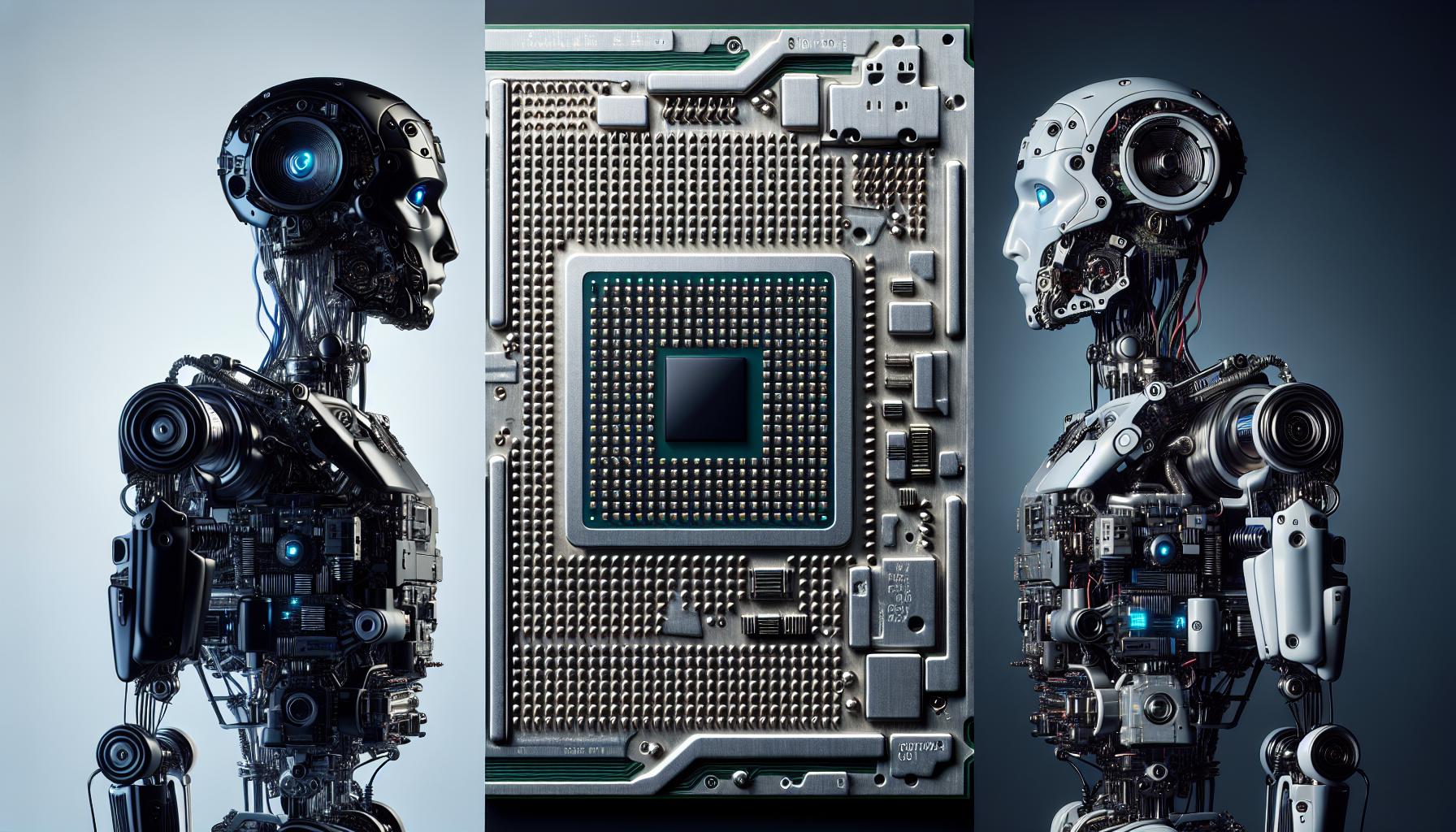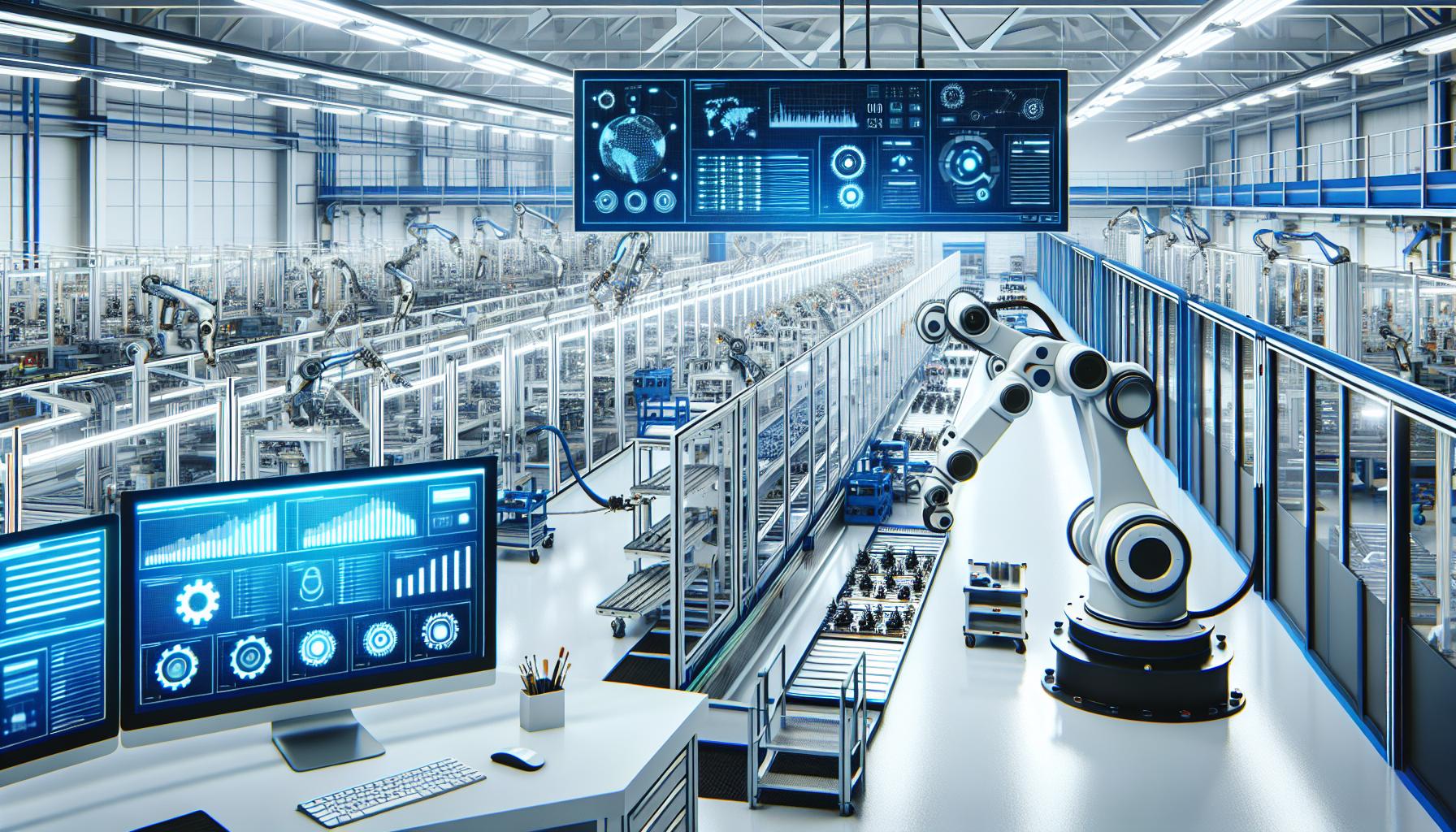
As someone who’s worked extensively with both computers and robots, I’ve noticed many people often confuse these two technologies. While they’re both revolutionary inventions that have transformed our world, they serve distinctly different purposes and operate in unique ways.
I’ll help you understand that computers are primarily information processing machines that handle data and calculations, while robots are physical machines designed to perform specific tasks in the real world. While most modern robots contain computers as their “brains,” they’re fundamentally different in their capabilities and applications. Through my experience in tech, I’ve learned that understanding these differences is crucial for anyone interested in technology or considering a career in either field.
Key Takeaways
- Computers are information processing machines focused on data handling, while robots are physical machines designed for real-world task execution
- The main components differ significantly – computers use CPU/GPU for processing and digital interfaces, while robots employ microcontrollers, sensors, and mechanical parts
- Robots typically contain computers as their “brains” but extend capabilities with physical interaction features like actuators, end effectors, and mobility systems
- Computer I/O systems focus on human interfaces (keyboard, display, etc.), whereas robots use environmental sensors and mechanical outputs for real-world interaction
- While computers excel at data processing and software tasks, robots specialize in physical manipulation, automated movement, and environmental interaction
- The future evolution shows increasing convergence between the two technologies through AI integration, advanced sensors, and improved human-machine interfaces
What Are The Differences Between Computers And Robots
Computers function as data processing systems with dedicated input processing output components. A standard computer includes a CPU, memory storage, motherboard, keyboard, mouse and monitor, forming an integrated electronic system for calculations and information management.
Robots emerge as physical machines equipped with mechanical components for real-world interactions. A typical robot contains actuators, sensors, power systems, end effectors and a control unit, enabling movement and task execution in physical environments.
| Component Type | Computers | Robots |
|---|---|---|
| Processing Unit | CPU/GPU | Microcontroller |
| Interface | Digital Screens | Physical Tools |
| Input Methods | Keyboard/Mouse | Sensors/Cameras |
| Output Methods | Display/Audio | Motors/Actuators |
| Power Source | AC Power/Battery | Batteries/Motors |
The fundamental architecture differentiates these technologies:
- Computers process digital information:
- Execute programmed instructions
- Store data in memory
- Display results on screens
- Handle multiple software tasks
- Robots interact with physical environments:
- Move mechanical components
- Respond to sensor readings
- Manipulate objects
- Navigate spaces autonomously
The integration of both systems creates modern robotic solutions:
- Industrial robots combine precise controls with mechanical power
- Service robots merge computing intelligence with physical assistance
- Mobile robots integrate navigation software with locomotion systems
- Collaborative robots blend processing capabilities with safe interaction features
Modern applications demonstrate distinct operational focuses:
- Computers excel in:
- Data analysis
- Digital communications
- Software execution
- Information storage
- Robots specialize in:
- Physical manipulation
- Environmental interaction
- Automated movement
Key Physical Differences

Physical distinctions between computers and robots manifest in their structural design and operational capabilities.
Form Factor and Mobility
Computers maintain fixed configurations with standardized components contained within a single housing unit. Desktop computers occupy stationary positions on desks or tables while laptops offer limited portability within their clamshell design. Robots feature diverse form factors engineered for specific tasks: industrial robotic arms, humanoid service robots, wheeled delivery units. Their mechanical components enable movement through actuators, joints, servos that manipulate objects or transport the entire unit.
Input/Output Systems
The input/output mechanisms reflect fundamentally different interaction models between computers and robots:
Computer I/O Systems:
- Display screens for visual output
- Keyboards and mice for data entry
- USB ports for peripheral connections
- Speakers for audio output
- Network ports for data transfer
- Environmental sensors (temperature, pressure, proximity)
- Cameras for visual recognition
- Tactile sensors for pressure detection
- Actuators for physical movement
- Grippers and end effectors for object manipulation
- Motion control systems for navigation
The computer’s I/O focuses on human interface and data exchange while the robot’s systems enable physical world interaction and environmental awareness. These distinct approaches to input and output reflect their specialized roles in information processing versus real-world task execution.
Processing and Decision Making

Processing and decision-making capabilities represent a fundamental distinction between computers and robots, with each system employing different approaches to handle tasks and information.
Computer Processing Methods
Computers process information through sequential operations in their Central Processing Unit (CPU), following pre-programmed instructions stored in memory. The processing workflow includes:
- Fetching instructions from memory through binary code interpretation
- Executing arithmetic calculations at speeds up to 5 billion operations per second
- Storing results in RAM for immediate access or hard drives for long-term retention
- Processing data through fixed algorithms with predictable outcomes
- Managing multiple tasks through time-sharing schedules in the operating system
Robotic Artificial Intelligence
Robots incorporate advanced decision-making systems that combine sensor data with artificial intelligence to interact with the physical world. Key aspects include:
- Processing environmental data through multiple sensors (cameras, infrared, proximity)
- Utilizing machine learning algorithms to adapt responses based on experience
- Implementing real-time decision trees for autonomous navigation
- Coordinating multiple actuators to execute physical movements
- Integrating feedback loops to adjust actions based on environmental changes
| Feature | Computers | Robots |
|---|---|---|
| Processing Speed | 3-5 GHz | 100-500 MHz |
| Decision Type | Deterministic | Adaptive |
| Input Processing | Digital Data | Sensor Data |
| Output Type | Digital Results | Physical Actions |
| Learning Capability | Fixed Programming | Dynamic Learning |
Purpose and Applications

The distinct purposes of computers and robots shape their specific applications across industries. Their unique capabilities determine how they serve different needs in modern technology.
Computer Functions
Computers excel in data processing operations across multiple domains:
- Execute complex calculations for financial analysis, scientific research
- Process digital transactions in banking systems, e-commerce platforms
- Store vast amounts of data in databases, cloud storage systems
- Run software applications for design, communication, entertainment
- Manage network operations in telecommunications, internet services
- Generate reports from raw data for business intelligence
- Handle document processing for office automation systems
- Assemble products in manufacturing lines, automotive plants
- Perform precision operations in surgical procedures, microelectronics
- Transport materials in warehouses, distribution centers
- Inspect infrastructure in hazardous environments, underwater locations
- Clean surfaces in commercial buildings, residential spaces
- Package products in food processing facilities, fulfillment centers
- Navigate terrain for exploration missions, search and rescue operations
| Application Domain | Computer Role | Robot Role |
|---|---|---|
| Manufacturing | Process control systems | Physical assembly |
| Healthcare | Patient records management | Surgical assistance |
| Logistics | Inventory tracking | Material handling |
| Security | Data encryption | Physical surveillance |
| Research | Data analysis | Sample collection |
Autonomy and Control
The autonomy and control mechanisms distinguish computers from robots in their operational independence and user interaction requirements. These fundamental differences shape how each technology functions in practical applications.
Human Interaction Requirements
Computers demand constant human input to execute operations effectively. They rely on direct commands through:
- Keyboard inputs for text entry operating instructions
- Mouse movements for graphical interface navigation
- Touchscreen gestures for mobile device control
- Voice commands for speech recognition systems
Computers maintain a reactive relationship with users, responding only to specific input commands or pre-programmed automated tasks.
Independent Operation Capabilities
Robots exhibit varying degrees of autonomous behavior through:
- Self-directed movement using internal navigation systems
- Environmental adaptation based on sensor feedback
- Task completion without continuous human oversight
- Real-time decision making using onboard AI systems
- Obstacle avoidance in dynamic environments
- Task sequence optimization
- Self-diagnostic maintenance checks
- Energy management optimization
| Autonomy Aspect | Computers | Robots |
|---|---|---|
| Decision Making | User-dependent | Semi-autonomous |
| Operation Duration | Requires manual starts/stops | Continuous operation capable |
| Task Adaptation | Fixed programming | Dynamic response |
| Error Handling | User intervention needed | Self-correction possible |
Future Evolution
The convergence of computers and robots creates transformative technological advancements in three key areas:
Artificial Intelligence Integration
- Neural networks enable robots to process complex data patterns
- Machine learning algorithms enhance autonomous decision-making capabilities
- Natural language processing improves human-robot interactions
- Computer vision systems provide advanced environmental recognition
Physical Capabilities
- Nano-scale robotics merge computing power with microscopic mechanical functions
- Soft robotics introduce flexible materials for adaptive movement
- Biomimetic designs replicate natural biological systems
- Advanced sensors increase environmental awareness accuracy
- Mixed reality interfaces combine digital displays with robotic controls
- Gesture recognition systems enable intuitive robot programming
- Brain-computer interfaces allow direct neural control
- Social robots incorporate emotional intelligence algorithms
| Evolution Metric | Current State | 5-Year Projection |
|---|---|---|
| AI Processing Speed | 100 TFLOPS | 1,000 TFLOPS |
| Robot Response Time | 100ms | 10ms |
| Sensor Resolution | 12MP | 108MP |
| Battery Life | 8 hours | 72 hours |
The integration of quantum computing introduces unprecedented processing capabilities for robots, enabling:
- Complex calculations in milliseconds
- Simultaneous task execution
- Enhanced pattern recognition
- Optimized path planning
- Real-time environmental modeling
- Decentralized decision making
- Reduced latency responses
- Local data processing
- Enhanced security protocols
- Improved operational efficiency
Fundamental Differences
I’ve explored the fundamental differences between computers and robots revealing their distinct roles in our technological landscape. While computers excel in processing and managing information robots stand out through their physical interactions and autonomous capabilities in the real world.
Looking ahead I see these technologies evolving together creating more sophisticated solutions for our modern challenges. The fusion of computing power with robotic capabilities will continue to push boundaries in fields like healthcare manufacturing and artificial intelligence.
I believe understanding these differences is crucial for anyone interested in technology. Whether you’re working with computers robots or both knowing their unique strengths and limitations will help you make better decisions in your technological pursuits.








